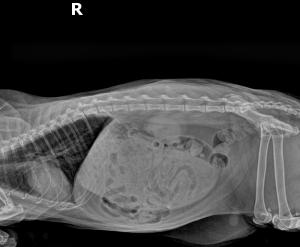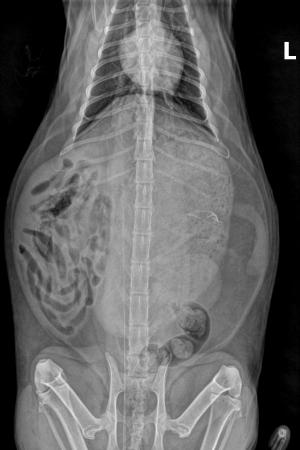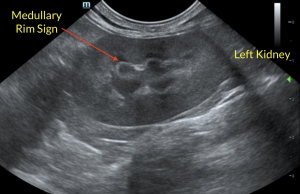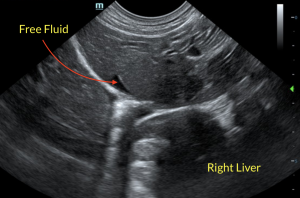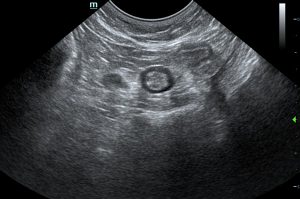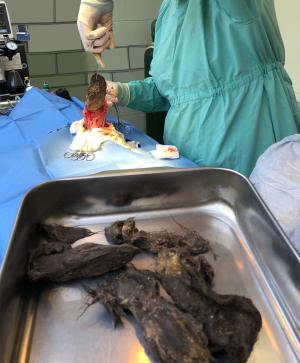DX
Severe gastric distention with retained hyperechoic to progressively shadowing ingesta.
Outcome
The sonographic findings indicated a potential functional gastric motility disorder or gastroparesis. The possibility of non-visualized mechanical obstruction to ingesta outflow could be excluded yet was not obvious given lack of small intestinal mural pathology. No overt evidence of masses or neoplastic criteria was noted. Hospitalization with 24 hour IVF and GI support with documented fast and monitoring for evidence of gastric emptying was recommended. If persistent retained ingesta, gastric emptying via laparotomy with gastrointestinal biopsies may be indicated. The patient underwent an exploratory surgery during which a 1 pound trichobezoar was removed from the stomach via gastrotomy. During follow up exam, the patient was reported to be doing very well.

